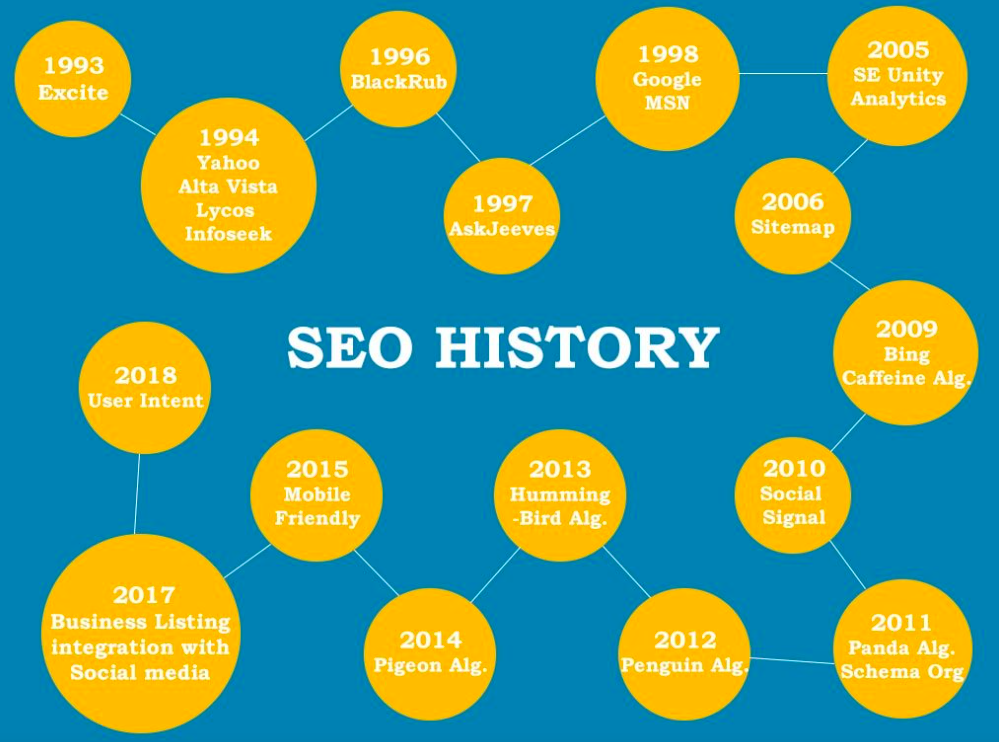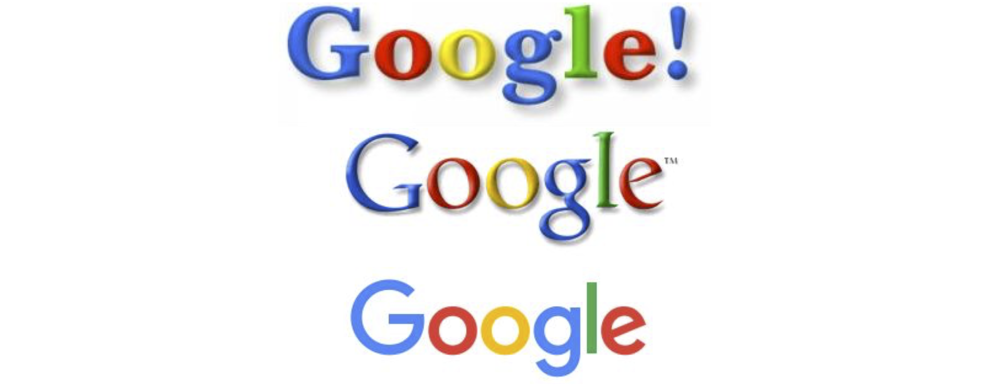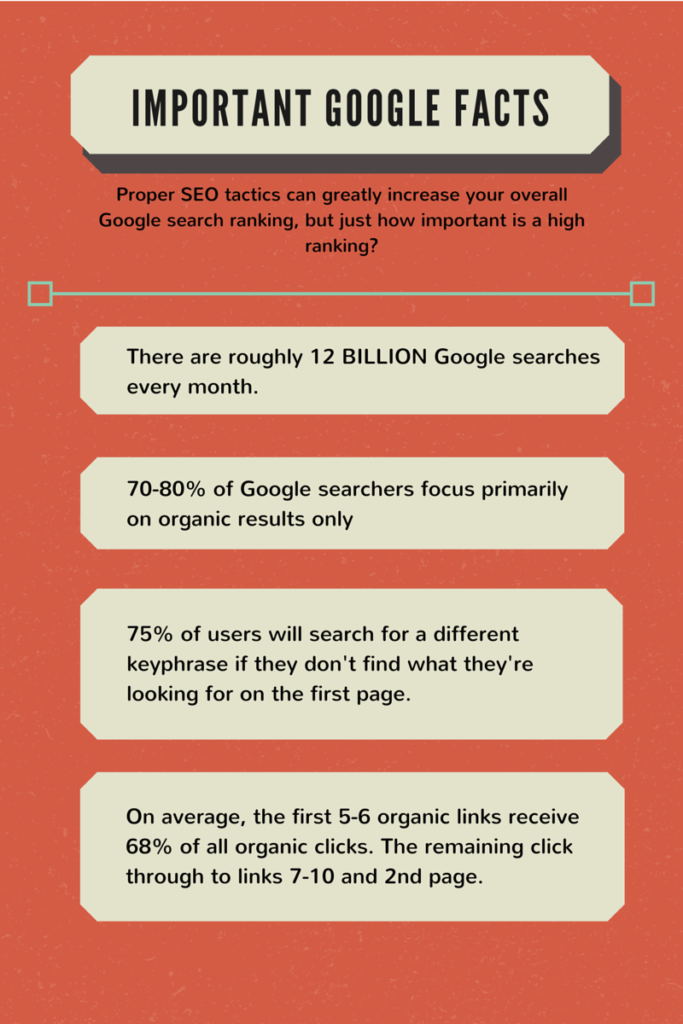Once Upon An SEO: Tracing SEO History and Evolution

Table of Contents
- Internet Evolution
- A Recap of Search Engines
- The History of SEO and Search
- SEO Fun Facts
- SEO Myths
- Key Takeaways
- Conclusion
- FAQs
Search engine optimization or SEO is constantly changing and evolving. It’s a powerful digital marketing field that helps strengthen the brand voice, boost website traffic, and increase ROI. Due to it being effective and inexpensive, it is widely used by marketing professionals worldwide.
However, have you ever wondered about SEO history and its evolution? Although there is no concrete information about the exact time when SEO began, most experts believe it started in 1991. Through the years, SEO has undergone constant changes that have led to its evolution. Let’s start from the beginning.

Internet Evolution
There has been tremendous growth in internet users in the past few decades. People are constantly looking up information online using various devices, and search engines are working to provide them with contextual and relevant results.
In the beginning, remote computers were able to connect to the Internet using telephone lines with an AT&T modem launched in 1958. This was the very first form of the Internet.
A Recap of Search Engines
With time, there was a lot of information online that required organization and proper indexing so that it was easier and valuable to retrieve. In 1945, Dr. Vannevar Bush, the Director of the Office of Scientific Research and Development, came up with an idea for developing a standard archive for the world’s data. However, it was not until 1990 that Archie, the first search engine, came into existence. It was created by Alan Emtage, a McGill University student.
There were significant developments in the next few years, with different versions of search engines coming into being. Some of these search engines can be recognized even today.
They are listed below:
- Archietext: In February 1993, six Stanford University students created Archietext. It evolved and became the search engine Excite. Search Engine Land (SEL) says, “Excite revolutionized how information was cataloged, making it easier to find information by sorting results based on keywords found within content and backend optimization.”
- World Wide Web Wanderer: In June 1993, World Wide Web Wanderer, later known as Wandex came into existence under Matthew Gray.
- Aliweb: Martijn Koster launched Aliweb in the year 1993. It allows website owners to submit their web pages.
- In December 1993, three search engines – RBSE spider, World Wide Web Worm, and JumpStation used web robots to crawl site content and servers for results.
- The year 1994 saw the launch of popular search engines – AltaVista, Infoseek, Yahoo, and Lycos.
- In April 1997, AskJeeves was introduced and later became Ask.com.
- In September 1997, Google.com was registered.
The History of SEO and Search

The 90s
With search engines becoming popular and more families connecting via the Internet, searching for information was easy. However, the problem was the quality of that information.
While the search engine results matched the words from queries, many website owners went the wrong way and started keyword stuffing. They repeated keywords multiple times in their text to drive traffic and improve rankings. They also used spammy backlinks to improve authority. There were no ranking criteria at that time, and by the time algorithms were fixed, new black-hat practices were already taking place.
In 1998, Lawrence Page and Sergey Brin, the two creators of Google, published The Anatomy of a Large-Scale Hypertextual Web Search Engine. It was in this paper that the two students also mentioned PageRank. Google uses this technology to rank search results not based on keywords alone but quality as well.
The early 2000s
The early 2000s saw the start of Google’s takeover. To make search engines less advertising-centric, Google started providing white-hat SEO guidelines.
2000-2002
The guidelines didn’t have an impact and users weren’t following them. This was partially because PageRank was based on the number of inbound links. More inbound links would increase the ranking. However, it was still impossible to measure the backlinks’ authenticity.
2003-2004

During this time, there was a lot of sketchy behavior displayed by website owners. These tactics were against the guidelines and were called “black-hat SEO.” Black-hat SEO is the practice of including things like keyword stuffing, hiding links and texts, and duplicating content. In response to this, Google came up with its first significant algorithm update named “Florida.” It punished websites that were practicing black-hat SEO tactics.
2005: A big year for SEO
The year 2005 marks one of the most significant years in SEO history. In January, Google united with MSN and Yahoo for Nofollow Attribute, which was created to reduce the number of spammy comments and links on websites.
2009: SEO shakeups
This was another important phase to note in the history of search engine optimization. In 2009, Google faced a shakeup. Bing was introduced in June, and Microsoft started marketing it aggressively, saying that it was a powerful search engine that would give better results than Google. But just as SEL predicted, Bing was not extraordinary nor a Google killer. According to the Search Engine Journal, the only difference was that Bing gave priority to keywords in URLs. It also favored pages from large websites and capitalized words.
In August, Google released the Caffeine algorithm change preview and requested public help to test the next-generation infrastructure. According to Moz, “It was designed for speed crawling, expanding the index and integrating indexation and ranking in real-time.” Caffeine was finally fully introduced a year later.
2010- to present

Typing a search query in Google is fun when you see the suggestions, thanks to Google’s instant technology, which was rolled out in September 2010. Moz says, “It made SEOs combust until they realized that it didn’t have any result on ranking”. But Google’s instant technology, together with the evolution of SEO from 2010 onwards, was another phase of Google’s mission to improve, solve and make things easier for its users.
There was also growing importance for social media content in SEO in the same year. In December, both Bing and Google added social signals.
2011: Google’s Panda Algorithm Update
Google continuously updates its algorithm to provide a better experience for its users. By 2011, it worked against a huge marketing trend that polluted the search results. These content farms had raised a large volume of low-quality content, which worked for a while. Marketers created multiple pages within a very short time.
The pages created did not adhere to Google’s guidelines. According to Matt Cutts, “Content farm pages did the bare minimum without being spam.” One example in SEO history that is worth noting is Demand Media. This was one such content farm that experienced a rise in its market value that soared to $2 billion.
Google’s Panda targeted all these pages with low-quality content and reduced their results. It also went ahead and rewarded pages that had high-quality and unique content. Companies like Demand Media that relied on huge volumes of low-quality content soon collapsed.
2012: Penguin algorithm update
In 2012, Google took another step to reward websites with high-quality and unique content. Google’s Penguin launched a selective and refined attack on low-quality pages. The update dived deeper into link-building practices and many websites and SEOs received penalties for low-quality and thin content.
Penguin was a powerful strategy used to tackle the low-quality content issue and discover the true value of links. However, Penguin didn’t take into consideration external links on sites but only links that pointed back to it. The Penguin update is of key importance when talking about SEO history and evolution.
2013: Hummingbird helps Google to decipher intent
The Hummingbird update is another notable update regarding the history of search engine optimization. While Penguin and Panda were smaller updates that were added to Google’s search engine, the Hummingbird update worked across the entire algorithm.
It was relatively similar to the Florida update. It worked to show results by translating semantic search. Currently, semantic search refers to how search questions are read. It dives deeper to look into what users are searching for rather than simply reading the query.
2015: Google introduces RankBrain
RankBrain was introduced in 2015 and was the search engine’s first algorithm update that used artificial intelligence. The primary purpose of this update was to understand new user queries and determine the user’s intent. RankBrain is designed to make updates on its own and also watches user satisfaction closely.
SEO Fun Facts
Now that you know about SEO history and its evolution let’s talk about some important SEO fun facts.
1. Three-quarters of SEO is off-page
This SEO fun fact may come as a shock to you. Do you know that all the effort you put into creating content for your website will only count for about 25% of the ranking factors? You must focus on off-page SEO. Off-page SEO means getting backlinks from reputable websites to link to your piece of content.

2. Top-ranked pages on Google have an average word count of 1447
To rank on Google’s first page, you must focus on long-form, high-quality content. People tend to spend a lot of time on content that adds value, and content like this also gets shared frequently. Aim for at least 1500-2000 words if you’re looking to make it to the top ten on Google. Also, ensure that you focus on providing high-quality content that’s informative and relevant.
3. 51% of people discover new businesses on their phone
Is your site designed to be mobile-friendly? If your answer is no, you need to consider it right away. Today, people rely on their smartphones for everything, and it’s not only about messaging or social media, but people use it to shop online.
If you want your business to get noticed, then it’s time to make your website mobile-friendly. Google expects all websites to be mobile-friendly, and if it is, you will improve your SEO and attract a lot of new customers.
4. Websites convert 14.6% of referrals from Google.
Looking to attract genuine buyers to your website? There’s nothing better than Google. When people look for a service or product, they tend to already be in the buyer’s mind. So, before a buyer makes a purchase, they will research that particular product or service before deciding which one to buy. Hence, you must focus on SEO when it comes to online marketing.
5. 90% of users prefer organic search results over PPC ads
There is no denying that Google’s PPC Ad campaigns are good business. However, despite paid advertising’s popularity, getting a website to rank on page one of Google beats the paid advertisements by a huge margin. In fact, out of every ten searches performed, nine will click on organic results.
SEO Myths
There are plenty of dos and don’ts with regard to SEO and how websites get ranked. In the world of digital marketing, there are a lot of SEO misunderstandings and myths. That’s why it’s very important to understand these before implementing SEO strategies for your website. Here are some SEO myths below.
1. Keyword targeting is irrelevant.
One of the biggest SEO myths is that keyword targeting does not matter. This is not true at all. Keywords are important and they still matter. Keywords show up on search engine results pages (SERPs). You still need to include keywords in all your content, but efforts made by bloggers and marketers to try and hit a keyword ratio became no longer valid with Google’s Hummingbird update. So, while keyword ratios are no longer needed, you still need to incorporate relevant keywords in your copies.
2. Meta tag keywords don’t matter
Meta tag keywords are important. They are used mainly in HTML documents to give structured metadata about a particular website. The title tag, meta description, and meta keywords or phrases are the three different elements of metatags.
Although Google does not use keyword meta tags for ranking, they are still relevant as they tell Google what the content is all about. Meta tags also help to make search results a lot more appealing, thus attracting more clicks.
3. Having more links is better than having more content
Earlier, it was advisable to focus on more links than to develop more content, but that has now come to an end. Today, it’s all about the quality of those links rather than just numbers. Creating amazing content and natural links will help you improve your search rankings.
So, why has this changed? In the past, SEO pros and webmasters took advantage of link building and created a lot of links that had no value. This was done just to improve their rankings. Once Google realized this, it changed its focus to search intent so that it could serve its users better.
4. Too many keywords will result in poor organic rankings
This is another one that tops the SEO myths lists. Bloggers and SEO experts are constantly asking themselves how many keywords would be considered as too many.
Another question that is often asked is whether Google will penalize websites if they over-optimize. However, the simple answer is that if you use keywords naturally and make sure to provide relevant, helpful content then the number of keywords doesn’t matter. The key here is to provide a variety of keywords throughout your content. These include,
- Product keywords
- Branded keywords
- Long-tail keywords
- Short-tail keywords
- Market-defining keywords
- Customer-defining keywords
- Latent semantic indexing
- Geo-targeting
5. Social doesn’t impact SEO
Although this is partially true, comments or likes on a social post don’t directly impact your Google rankings, but they have a positive impact on engagement and shares. This, in turn, creates social signals, which can then add SEO value. Sharing on Instagram, Facebook, LinkedIn, Twitter, and other social media platforms has shown an increase in organic click-through rates (CTR) and social impressions.
6. Local SEO doesn’t matter anymore.
When users search for a service and product in a local area where you provide it, it’s important to show up in those relevant search results. If your website isn’t optimized for local search, local users may not find you. This can then mean potential business loss and lost conversions. 46% of all searches that are conducted online seek local information. You can also learn more about local SEO history and how it started for better understanding.
7. Images don’t need to be optimized.
Google uses URLs and file names to get an understanding of images. Hence, it’s important to optimize your images properly. As a thumb rule, it’s best to use images that Google supports. Here are some of the file types that the search engine supports.
- PNG
- JPEG
- WebP
- BMP
- GIF
- SVG
Images should also be made accessible, and this requires alt text. When you add alt text, images become understandable and accessible to people with vision impairments and also other disabilities. Ensure that your alt text is as descriptive as possible without using any spammy tactics. When your alt text is descriptive, your image will be better understood.
8. Target keywords in anchor text don’t matter.
Link building is a very important part of SEO strategies. However, whether keywords need to be used in anchor text or not is currently debatable. This is because marketers are worried about over-optimization, which may result in being penalized by the search engine.
Keyword stuffing can negatively impact your website rankings. To say that keywords in anchor text do not help your website is not true at all because anchor text helps the search engine to understand the page content and also determine link-building relevancy.
There are many misconceptions about SEO, which can sometimes be quite challenging. You may often be confused as to where to focus when it comes to website improvements. Remember, all Google algorithm updates aim to help users easily find what they are looking for based on intent.
Key Takeaways
- In the beginning, remote computers were able to connect to the Internet using telephone lines with an AT&T modem launched in 1958. This was the very first form of the Internet that was widely used earlier on.
- It was not until the year 1990 that Archie, the first search engine, came into existence. It was created by Alan Emtage, a McGill University student. This was the beginning of SEO and is now referred to as SEO history.
- The early 2000s saw the start of the Google takeover. To make search engines less advertising-centric, Google started providing white hat SEO guidelines.
- These white hat SEO guidelines didn’t have an impact, and users weren’t following them. This was partially because PageRank was based on the number of inbound links.
- The year 2005 marks one of the most significant years in SEO history. In January, Google united with MSN and Yahoo for Nofollow Attribute. It was created to decrease the number of spammy comments and links on websites.
- In the year 2009, Google faced a shakeup. Bing was introduced in June, and Microsoft started marketing it aggressively stating that it was a powerful search engine that would give better results than Google. But just as SEL predicted, Bing was not extraordinary, nor a Google-killer.
- RankBrain was introduced in the year 2015 and was the search engine’s first algorithm update that used artificial intelligence. The main purpose of this update was to understand new user queries and to determine the user’s intent. RankBrain is designed to make updates on its own and also watches user satisfaction very closely.
Conclusion
Today, Google continues to rule the search engine space, with around nine out of ten queries passing through the algorithm. The search engine also constantly keeps updating its algorithm.
So, what does this mean for marketers and SEOs that try to rank in SERPs? SEO history shows that tricks will work only for a short while.
Successful companies are well-aware of the constant algorithm updates and work towards long-term goals of providing relevant content for their audience. The goal is to have fresh, relevant, high-quality content with authoritative backlinks and also use natural language that’s optimized for RankBrain or whatever comes with the next algorithm update.

FAQs
It’s believed that SEO first began in the year 1991. The world’s first website was also launched around the same time, and soon, many websites crowded the Internet.
One of the biggest changes in SEO is local SEO. Local searches have now become more specific and common. When you focus on local search, you have more opportunities to reach your target audience.
In 2021, Google introduced the Page Experience Update. As a result, the user experience will become an SEO ranking signal at some point. So, the better the user experience, the more likely it will receive weight from the search algorithm.
In the future, search engines are expected to have more data points to provide their users with more relevant material. In the future, Google will also use big data and AI to predict searches before they are even executed.
AltaVista was established in 1995. It was one of the most-used search engines earlier on, but it soon lost to Google. Yahoo later purchased it in 2003.
Google uses automated programs like crawlers and spiders to help generate its search results. Google has a huge index of keywords that help to determine search results. Google uses the trademark algorithm called PageRank that assigns each web page a score.
Latest Blogs
Explore how Google’s 2025 AI search updates triggered ranking chaos. Learn actionable strategies to adapt your SEO for AI Overviews, zero-click searches, and SERP volatility. Stay ahead now.
Learn how to rank on AI search engines like ChatGPT, Perplexity, and Gemini by optimizing your content for authority, structure, and relevance. Stay ahead in AI-driven search with this strategic guide.
Explore the best healthcare SEO services for your medical practice. Improve online visibility and effectively reach more patients in need of your services.
Get your hands on the latest news!
Similar Posts

Artificial Intelligence
6 mins read
The Role of AI in Digital Marketing: AI Article Generators Transforming Content Creation

Artificial Intelligence
4 mins read
How AI Content Creator Is Shaping the Future of Digital Content

Digital Marketing
3 mins read